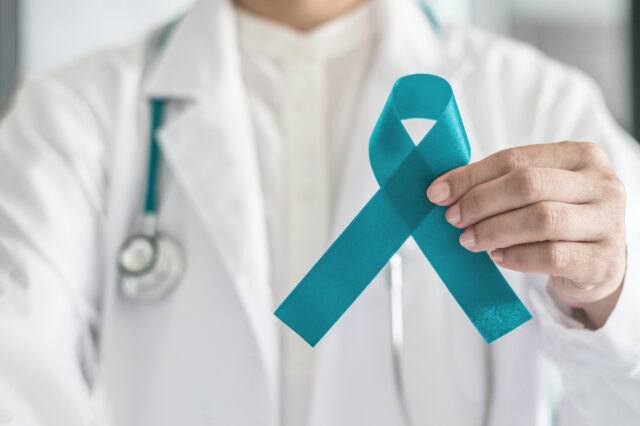- Investigators
- Dheeraj R Gopireddy, Karina E Hew
- Status
- Accepting Candidates
- Ages
- 18 Years - 80 Years
- Sexes
- Female
Ovarian cancer
Ovarian cancer most commonly manifests itself as an abdominal or pelvic mass. The mass is usually surgically removed through an abdominal incision (laparotomy). The surgery includes removal of the ovaries, uterus, fallopian tubes and any visible area of cancer spread.
This surgery sometimes requires resection of a portion of intestine or lymph nodes. In some cases after surgery, the abdominal cavity will fill with fluid, called ascites, caused by the cancer. Patients are treated with chemotherapy after surgery.
Is ovarian cancer hereditary?
Approximately 5-10% of ovarian cancers are considered hereditary. Hereditary cancer is more likely if there is at least one primary relative (mother, sister or daughter) under 50 years old who is diagnosed with ovarian cancer. Ovarian cancer is more common in women who carry the BRCA gene mutation for breast cancer.
Is there a screening test for ovarian cancer?
Since ovarian cancer is rare (1 in 80 women), screening programs have not been successful in detecting the disease. The best method for detecting ovarian cancer is a pelvic ultrasound for evaluation of the ovaries.
Can ovarian cancer be cured?
Overall, 25-30% of ovarian cancer is cured with surgery and chemotherapy. More than half of women diagnosed with ovarian cancer will survive longer than five years.
Treatment of ovarian cancer
Gynecologic cancer surgery
- Patients have surgery performed through the abdomen, vagina or both.
- Abdominal surgery is done under general anesthesia. It can be performed through a vertical incision that extends from the pubic bone upward toward the breast bone or though a horizontal incision located above the pubic bone.
- If a telescope or laparoscope is used, the incision can be limited to multiple small incisions in the abdominal wall.
- Vaginal surgery is performed through the vagina under general or spinal surgery. This approach allows the vulva, vagina and cervix to be carefully examined.
- Common vaginal procedures include uterine D&C, hysteroscopy, vaginal hysterectomy and some pelvic support procedures.
In general, it takes four to six weeks to recover from major abdominal surgery to the point that normal activities can be resumed. Recovery time from vaginal surgery is typically shorter than that of abdominal surgery.
Chemotherapy
- Chemotherapy involves the administration of chemical agents that poison cancer cells and, to a lesser degree, normal cells. There are many different chemotherapy agents.
- These can be administered intravenously, intramuscularly, intraperitoneally or orally. Most IV and intraperitoneal regimens are given at three- to four-week intervals. Most oral regimens consist of daily medication for two to four weeks each month.
- Chemotherapy agents may cause nausea, vomiting, hair loss, skin reaction or low blood counts. These side effects can often be controlled with additional medication. The side effects stop when treatment has ended.
- Some of the drugs used for chemotherapy in gynecologic oncology include Taxol, Carboplatin, Cisplatin, Doxal, Topotecan, Cytoxan and methotrexate.
Related conditions & treatments

The UF Health Jacksonville cancer program is accredited by the Commission on Cancer, a quality program of the American College of Surgeons.
Our experts
Clinical Trials: Ovarian cancer
UF Health research scientists make medicine better every day. They discover new ways to help people by running clinical trials. When you join a clinical trial, you can get advanced medical care. Sometimes years before it's available everywhere. You can also help make medicine better for everyone else. If you'd like to learn more about clinical trials, visit our clinical trials page. Or click one of the links below:
News and Patient Stories: Ovarian cancer
Ovarian Cancer: Symptoms, Risks and Treatments
According to the American Cancer Society, ovarian cancer ranks fifth in cancer deaths among women. A woman’s chances of being diagnosed are 1 in 78.

Know the facts about ovarian cancer
While ovarian cancer is not nearly as prevalent as breast cancer, it is just as concerning.

